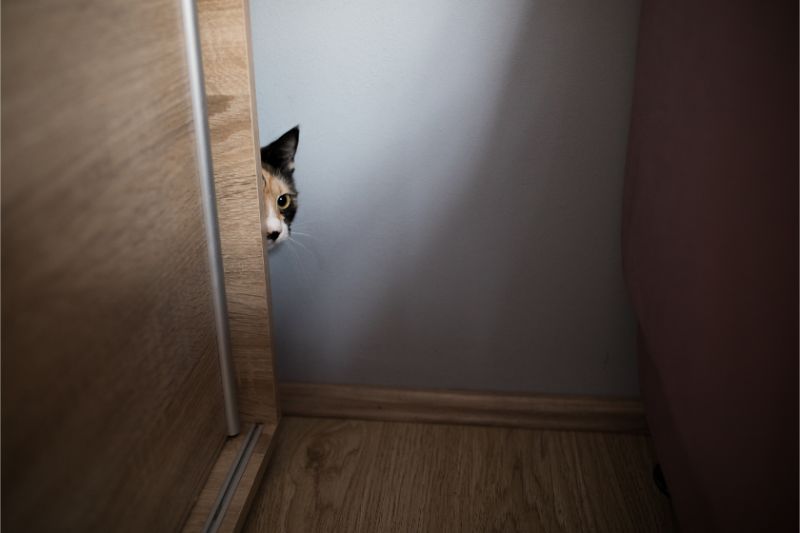Enough is Enough: Dealing with Pet Anxiety

We want the best for our pets, and that means taking all the necessary steps to provide them with a great life. Proper nutrition, good medical care, exercise, and, of course, lots of love and affection are obvious needs, but when it comes to pet anxiety, many animal lovers are at a loss.
Fear and anxiety are natural responses to certain stimuli, and no pet is completely immune. Learn how to spot the signs of pet anxiety and what you can do to help your furry friend.
Behavioral Signs
Some signs of pet anxiety, such as trembling or hiding, are obvious. Much of the time, however, it’s up to us to interpret their behaviors. Common signs a pet is experiencing anxiety include:
- Urinating or defecating indoors (dogs) or outside the litter box
- Pacing
- Unusual clinginess
- Sudden aggression
- Barking, whining, or yowling more than usual
- Excessive panting/drooling
- Trying to escape out doors, windows, fencing, etc.
- Digging
- Destructive behavior
- Getting stuck in small spaces
Causes of Pet Anxiety
- Separation anxiety – Separation anxiety takes many forms. Pets may be struggling with being left home alone all day while the family is at work, or they’re mourning the loss of playmates when the kids head back to school in the fall. Make sure your pet gets plenty of exercise each day and special one-on-one time when you get home. Provide as many opportunities for enrichment as possible while you’re away, such as food puzzles and sturdy chew toys. Also consider doggie daycare or a dog walking service to break up the monotony of their days.
- Loud noises – With its thunderstorms and fireworks displays, summer can be a difficult time for anxious pets. Set up a “safe space” for your pet in a quiet bedroom; include their bedding, toys, water, and a fan, radio, or TV for background noise. If you know there will be a noisy event, try wearing your pet out beforehand with a long walk, game of fetch, or other activity.
- Life changes – Pets, especially cats, are creatures of habit and can be greatly disturbed by changes in the household. A recent move, the addition of a new pet, or even rearranging the furniture can trigger anxiety in some animals. Strive to keep their routine as close to normal as possible during times of upheaval, and make changes as slowly as you can. Keep in mind that multi-cat households should have one litter box per cat, plus one extra.
Once you’ve determined the cause of your pet’s anxiety, you can make changes to provide them some relief. In extreme cases, additional help in the form of pharmaceuticals or behavioral training may be needed. Please don’t hesitate to contact the team at Bowman Veterinary Hospital for more information.


